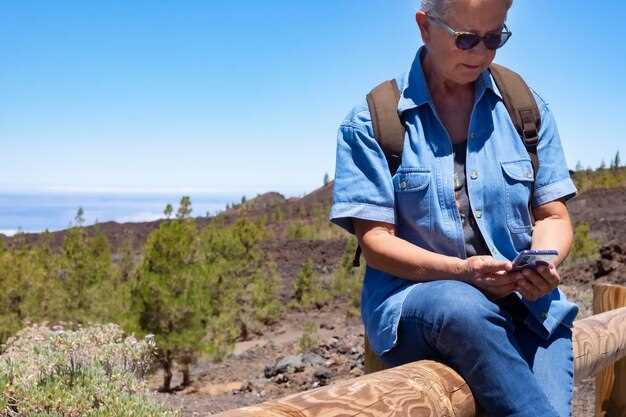
Encountering a vehicle breakdown in a remote desert area can quickly escalate into a life-threatening emergency. The harsh environment, characterized by extreme temperatures and scarce resources, can test even the most seasoned adventurer. Having the right knowledge and strategies can make all the difference between survival and peril.
In such isolated circumstances, understanding how to manage your surroundings and utilize available resources is crucial. From finding shelter and water sources to signaling for help, these essential survival tips will equip you with the skills needed to navigate the challenges of a desert breakdown. Awareness of your immediate environment and preemptive planning can significantly enhance your chances of surviving until assistance arrives.
This article aims to provide a comprehensive guide to surviving a breakdown in the desert. By following these tips, you can increase your endurance and maintain your safety in what can be an unforgiving landscape. Whether you’re an occasional traveler or an avid explorer, understanding desert survival tactics is essential for anyone venturing into the wilderness.
Finding Water Sources in Arid Environments

In remote areas characterized by arid climates, locating a reliable water source is essential for survival. While the environment may seem barren, there are several methods to find and collect water.
Look for Vegetation: Vegetation often signifies the presence of water below the surface. Areas with dense plant life, such as trees and shrubs, are more likely to have nearby water sources. Pay attention to the types of plants; for example, willow and cottonwood trees typically grow near water.
Check Low-Lying Areas: Water tends to accumulate in low areas due to gravity. Valleys, canyons, and depressions are good places to search for hidden water. Additionally, puddles or small pools may form after rare rainfalls in these regions.
Follow Animal Trails: Animals require water to survive, and they often have established paths leading to their drinking spots. Observing animal trails can guide you toward water, especially in remote areas where human activity is minimal.
Dig for Water: If you have no options left, digging in areas where vegetation is abundant can yield water. This is usually done in sandy soil or riverbeds. Digging a few feet down may uncover groundwater, which can be collected and purified.
Use Solar Still: A solar still is an effective method to extract moisture from the ground. By digging a hole, placing a container at the bottom, covering it with plastic, and adding a small stone to create a dip, you can capture condensation during the daytime that will collect in the container.
Monitor Weather Patterns: In arid environments, rain can occur unexpectedly. Keeping track of potential rainfall forecasts can assist in planning your water collection methods. After rain, look for areas where water may have pooled.
By employing these techniques, you can enhance your chances of finding water in remote, arid environments. Always prioritize purification methods to ensure safety before consumption.
Creating Shelter Using Available Materials

In an emergency situation, creating a shelter from available materials can significantly increase your chances of survival in the desert area. The first step is to assess your surroundings for natural resources such as rocks, branches, leaves, and even discarded items. These materials can serve as a foundation for your shelter.
Start by selecting a location that offers some protection from the elements, such as strong winds or harsh sun. Ideally, choose an area that is slightly elevated to avoid flooding during unexpected rain showers. Survey the area for large rocks or trees that can provide a windbreak, maximizing your protection.
When you begin constructing your shelter, use sturdy branches to create a frame. Arrange them in a lean-to fashion against a large rock or tree, ensuring they are securely positioned. This structure will provide a basic framework that can be insulated with lighter materials such as leaves or grasses, helping to maintain body heat and block wind.
If available, use larger items like tarps or plastic sheeting to cover the shelter, which can offer additional protection from the sun and potential rain. Ensure that any covering is securely tied down using vines or ropes found in the area to prevent it from blowing away. If no large items are present, densely packed leaves and foliage can still create a makeshift roof that offers shade and insulation.
To enhance comfort, create a bedding area using soft materials like grass or dry leaves, raising yourself off the ground. This will help retain warmth during cooler desert nights and protect you from insects. Always remember that the objective of your shelter is to provide immediate safety from environmental hazards while ensuring you are as comfortable as possible until help arrives or until you can reestablish communication with the outside world.
Navigating with Minimal Equipment in the Desert
In emergency situations within remote desert areas, the ability to navigate effectively with minimal equipment is crucial for survival. Understanding your environment, adapting to the challenges it presents, and utilizing basic skills can make all the difference.
First, familiarize yourself with cardinal directions using the position of the sun. In the Northern Hemisphere, the sun rises in the east and sets in the west, providing a natural compass. At noon, the sun will be at its highest point in the southern sky. Use this knowledge to maintain a sense of direction when you have no compass.
If you possess a map or even a paper-based guide, orient it using natural landmarks or the sun’s position. Identify prominent geological features such as mountains, canyons, or unique rock formations. These landmarks can serve as reference points to keep you on course.
In situations where visibility is hindered, rely on basic skills such as pacing. Count your steps to estimate distances traveled. This method can provide a rough gauge of how far you’ve gone and help you stay aware of your surroundings.
Additionally, learn to identify local flora and fauna. Certain plants may indicate the presence of water, while animal trails can lead you toward food sources or safer paths. Recognizing these signs can enhance your chances of survival and successful navigation.
Finally, use the stars for nighttime navigation. Familiarizing yourself with constellations like the Big Dipper can help you locate North when the sun sets. With practice, you can confidently rely on this method even in remote desert conditions.




